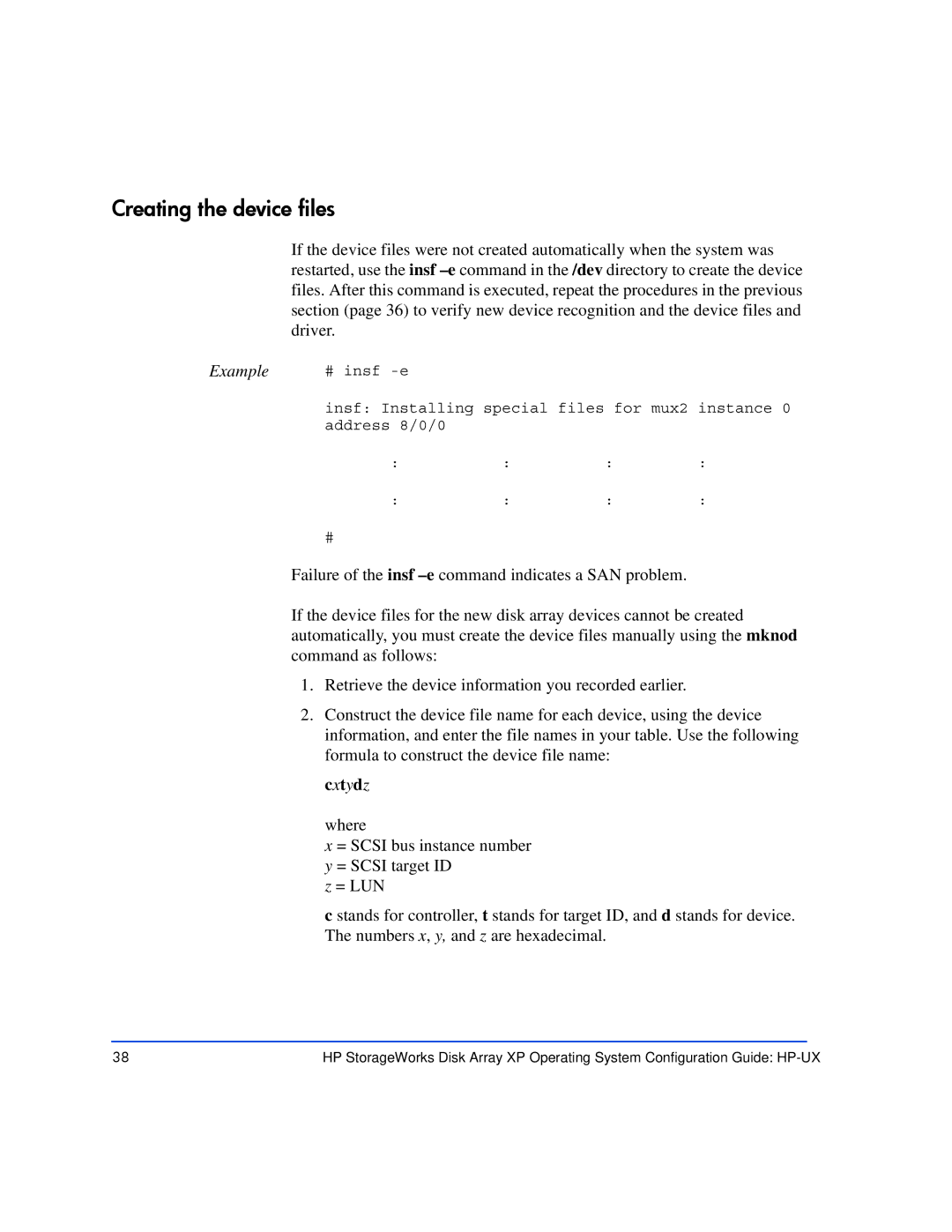Creating the device files
If the device files were not created automatically when the system was restarted, use the insf
Example | # insf |
|
|
|
| insf: Installing special files for mux2 instance 0 | |||
| address 8/0/0 |
|
|
|
| : | : | : | : |
| : | : | : | : |
| # |
|
|
|
Failure of the insf
If the device files for the new disk array devices cannot be created automatically, you must create the device files manually using the mknod command as follows:
1.Retrieve the device information you recorded earlier.
2.Construct the device file name for each device, using the device information, and enter the file names in your table. Use the following formula to construct the device file name:
cxtydz where
x= SCSI bus instance number
y= SCSI target ID
z= LUN
c stands for controller, t stands for target ID, and d stands for device. The numbers x, y, and z are hexadecimal.
38 | HP StorageWorks Disk Array XP Operating System Configuration Guide: |
